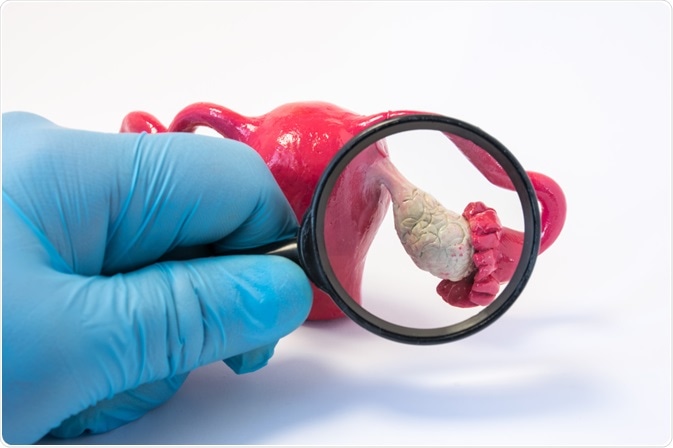Oophorectomy is a surgical procedure that involves the removal of one or both of a woman’s ovaries. On occasion, it can also be referred to as ovariectomy, although this is most commonly used in scientific research about surgical ovary removal in laboratory animals.
Although removing the ovaries is the biological equivalent to the castration of a male, this term is rarely used in medical literature.
The complete removal of ovaries, oviducts and uterine horns in animals is referred to as spaying in veterinary sciences. This is often used as a form of sterilization in animals, although is a significantly less common practice on humans as a form of birth control.
 Image Credit: Shidlovski / Shutterstock.com
Image Credit: Shidlovski / Shutterstock.com
Rationale for therapy
In practice, the most common reasons for an oophorectomy to be performed are:
- To remove developed diseases (e.g. cysts, malignancy)
- Prophylactic surgery to reduce ovarian or breast cancer risk
- In conjunction with a hysterectomy
Particularly when surgery is used as prophylaxis against ovarian or breast cancer, it is important to weigh up the possible benefits of preventing the disease to the risks that the surgery may present. In general, only women who are at a particularly high risk of ovarian or breast cancer should be considered for prophylactic oophorectomy.
Partial oophorectomy
Also known as ovariotomy, this involves the removal or resection of parts of the ovaries. This type of surgery is often used for cysts in the ovaries that need to be removed.
This surgical procedure is fertility-preserving in theory, however it is relatively frequent for women who undertake a partial oophorectomy to suffer from ovarian failure.
The long-term risks that are associated with the complete removal of the ovaries are less pronounced than in the partial procedure. As a result, the intention of the woman to bear children in the future should be considered when deciding whether surgery is the right option.
Salpingo-oophorectomy
When an ovary and the Fallopian tube are removed together, the procedure is referred to as salpingo-oophorectomy. This can take place either on one side or on both, known as unilateral or bilateral salpingo-oophorectomy respectively.
Whilst this procedure has the potential to provide an option of birth control in humans, it is not commonly used in practice, as tubal litigation is the preferred method. This involves blocking the Fallopian tubes to inhibit ovulation and leaving the ovaries intact.
Benefits and risks of surgery
Each woman has a unique medical history and the most likely benefits and risks of an oophorectomy are different.
For some women, the benefits far outweigh the risks, such as when there is a malignant cyst in the ovaries. Additionally, for women with a high risk of breast or ovarian cancer due to a strong family history or if they carry the high-risk BRCA gene mutation an oophorectomy may prove beneficial.
However, this is not the case for all women and the individual characteristics of each woman should be considered before a recommendation is made. This is largely because there are serious risks associated with the removal of the ovaries.
The risks are mainly associated with the woman’s sudden loss of the ability to produce the female hormones, estrogen and progesterone. This launches the woman into surgical menopause, with more sudden and pronounced symptoms. In addition, women without ovaries are at a higher risk of cardiovascular disease, osteoporosis and overall mortality.
Oophorectomy is a surgery that offers some women a great solution to remove and prevent cancer of the breast and ovaries. However, not all women are at a great risk of these cancers and unnecessary surgery can cause more harm than good.
Further Reading